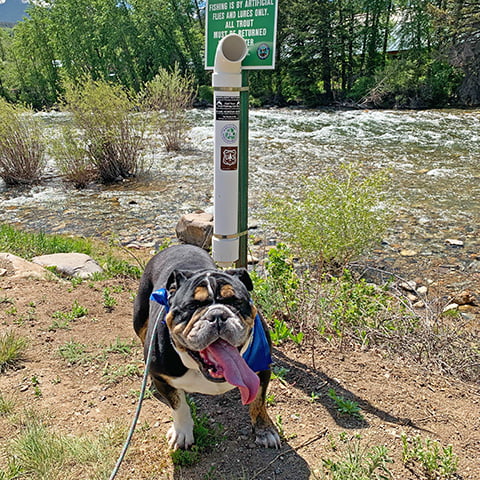Forest Health
Supporting the National Forest, in your backyard.
Healthy Forests = Healthy Communities
We all derive so much enjoyment from our surrounding forests, and our Forest Health volunteer projects allow us all to give something back. With visitation to Summit County continually on the rise and wildfire season getting longer and longer, it’s imperative we help the US Forest Service keep our beautiful forest growing strong for future generations to enjoy. Forest Health projects tend to be less physically demanding and are great volunteer opportunities for all ages. We look forward to working with you on our next Forest Health project!
Field Projects Require Liability Waivers
For all field projects, you must complete the Liability Waiver found below. A submitted waiver is required for your participation in any of the FDRD programming.
Only one waiver is needed per calendar year.
Types of Forest Health Volunteer Opportunities
Forest Monitoring
Our forest health monitoring volunteers are trained as citizen scientists, collecting data that gives us insight into how our forest regenerates.
Seed Collection
Similar to animals, plants have adapted over time to survive in their specific microclimates. By harvesting seeds and replanting them nearby, the plants have the best chance to survive.
Invasive Weeds
Some plants look pretty, but can spread seeds quickly and take over a landscape by forcing out other plants. It is important to control invasive plants.
Illegal Campsite Restoration
Camping too close to water can greatly impact stream health, and in turn fish populations. Restoring affected areas close to the rivers can greatly help overall stream health.
Social Trail Removal
When hikers wander off trail, more of the forest is impacted than necessary. By rehabilitating social trails, we bring life back to the forest.
Wildlife Habitat Restoration
There are many barbed-wire fences denoting old or void property lines. Removing these inhibiting fences allows for freer movement of wildlife.
Forest Thinning
Lodgepole Pines can grow back in an unhealthy manner in clearcut areas. By removing some, it allows more healthy trees to grow and ground foliage to thrive.
Burn Pile Rehabilitation
Foresters are putting fire breaks around the highly populated areas of Summit County by chopping down and burning trees. This can leave unsightly burn scars on the earth, rehabbing them can help the area grow back faster.
Erosion Control
On many high usage trails, the outside edge can sluff off and widen the trail. We can keep trails single-track by putting up wood to control the sluffing.
Fish Shocking
FDRD partners with the U.S. Forest Service and provides volunteers to “shock,” net, and measure fish in a local stream or river. This provides valuable data and helps USFS staff gauge the health of the stream. USFS employees will lead a volunteer group upstream, while shocking the water with a strong electrical charge, to stun the fish into submission so they can be collected. Volunteers follow with fish nets, catch all of the fish, and place them in buckets. We typically catch as many as 80-100 fish! After collection the volunteers will measure the fish, one by one, record the species, then set them free.
Check the Calendar page for upcoming Fish Shocking volunteer opportunities
Adopt-a-Trailhead Program
Each spring season, the winter snow slowly recedes back into the ground revealing all the treasures left behind by trail users from the fall and winter seasons. FDRD is offering the opportunity to volunteers to “Adopt-a-Trailhead” and take an extra step in helping FDRD, Summit County, and the USFS keep our local trailheads clean.
The Duties:
In partnership with


Trailheads
Adopt-a-Bin Program
The Forest Service has provided over 30 fishing line recycling bins throughout Summit County, positioned in specific locations for convenient line disposal for anglers. When the line is not properly disposed of, local birds will often find and use the material in their nests. Bins need to be emptied and kept clean, so anglers are able to utilize them for their intended purpose. Used fishing line is collected by FDRD to send in for recycling. Our hope is to keep these bins clean and keep the line out of our shores, waterways, and wildlife!
The Duties:





